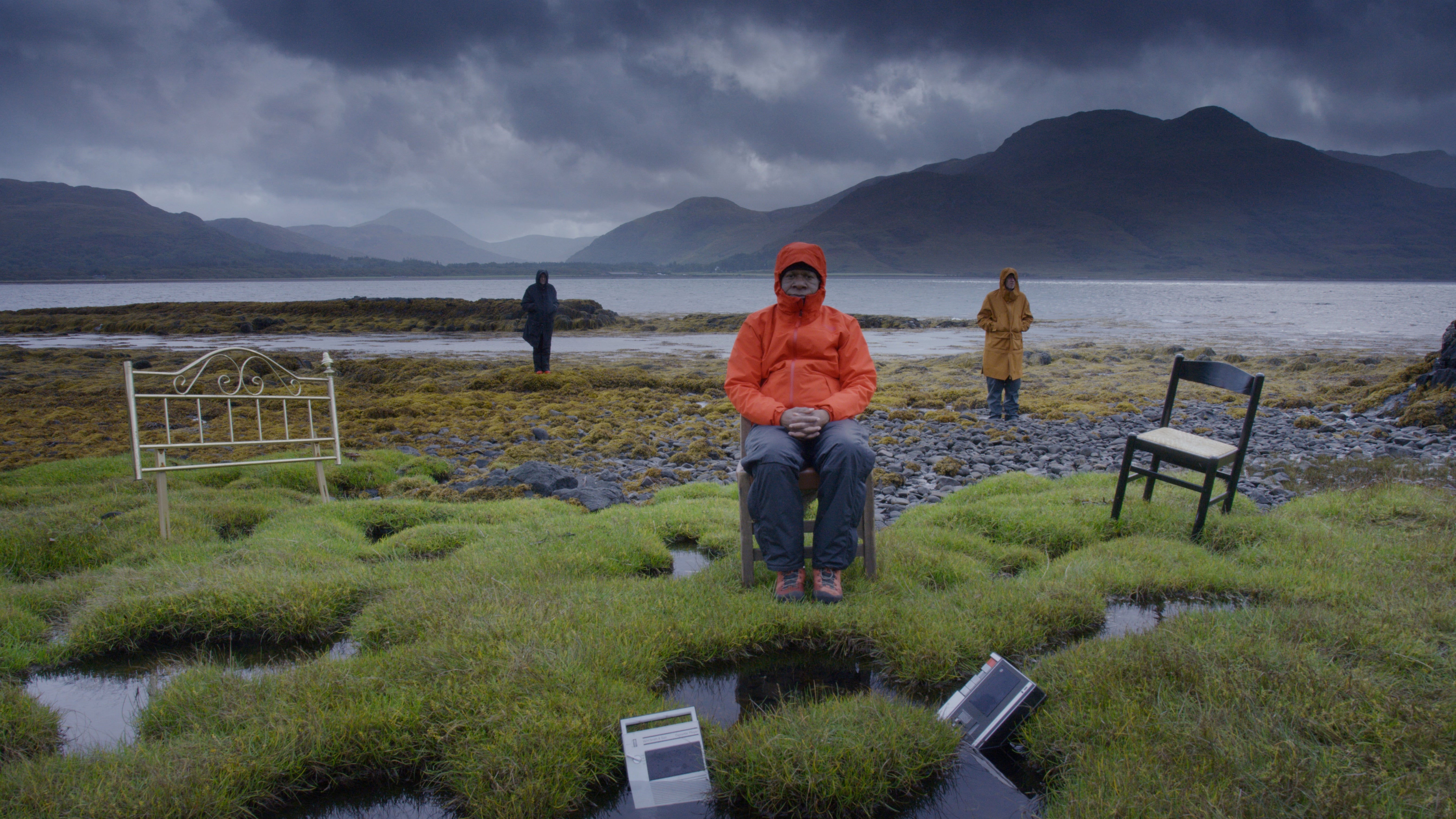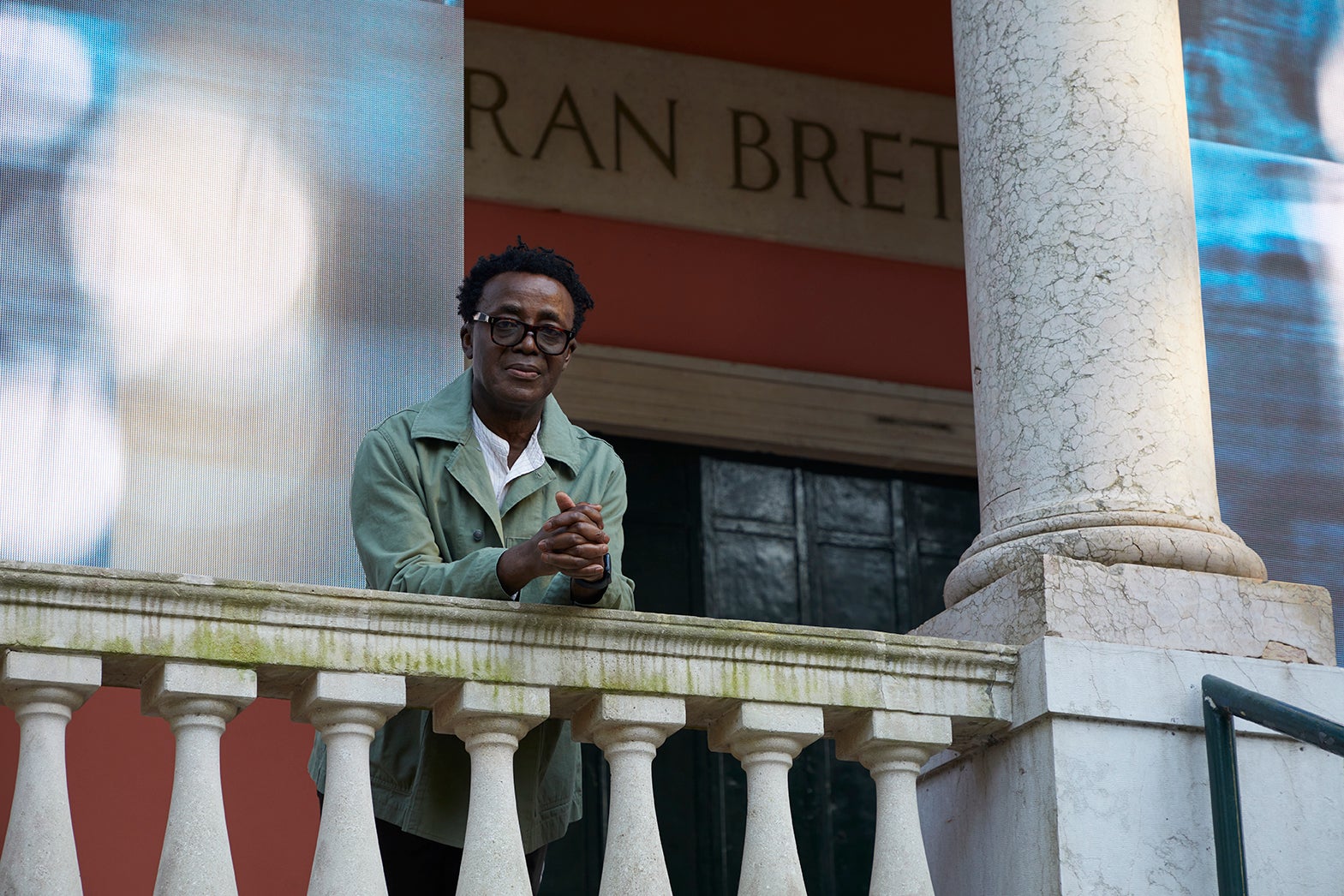British Pavilion at Venice Biennale review: John Akomfrah’s migrant journey is epic
With 62 screens and 31 hours of footage, veteran video artist John Akomfrah’s Venice Biennale work, ‘Listening All Night to the Rain’, is a visual feast, exploring the best and worst of our country at a time when the notion of British identity has never been so contested

The prevailing response to much contemporary art may be “so what?”, but you can hardly accuse John Akomfrah of failing to provide weighty content. In a Venice Biennale dominated by superficially striking but essentially shallow displays – with a focus on indigenous cultures that feels a little too much like “this year’s thing” – the veteran multimedia artist’s British pavilion stands out for the sheer density and richness of the imagery deployed over eight meaty film installations.
Representing Britain in the world’s greatest art festival – what has been described as the “Olympics of art” – at a time when the country is more polarised than ever, the notion of “British identity” more contested than at any time in living memory, Akomfrah isn’t afraid to bring together the “best” and the “worst” of what our nation has to offer. One particularly resonant moment sets the tone: we see a sign bearing the words, “No Coloured, No Dogs, No Irish” dumped in a bubbling stream in a heartbreakingly beautiful Scottish landscape. A phrase embodying small-minded xenophobia, of the kind that confronted Afro-Caribbean immigrants looking for lodgings in 1950s London, is juxtaposed with the kind of majestic setting that inspired radical British artists of the order of Turner and Wordsworth.
Akomfrah, 66, who is of Ghanaian heritage, has won numerous honours – not least a knighthood – for multiscreen films that interweave archive and newly shot footage to powerful and haunting effect. The invitation to fill the British pavilion, previously issued to Rachel Whiteread, Sarah Lucas, Jeremy Deller and Sonia Boyce, is the latest of those. One of Akomfrah’s greatest works, a three-screen tribute to the radical Jamaican-born academic Stuart Hall called The Unfinished Conversation (2011), left the viewer wondering where to focus their attention. But it was nothing compared to this work, entitled Listening All Night to the Rain and consisting of 62 screens showing 31 hours of footage.
Taking its title from a poem on the transitoriness of life by the 11th-century Chinese writer Su Dongpo, the work employs many of Akomfrah’s signature tropes: richly textured images of nature; dramatic newsreel footage of liberation struggles; and an observer-narrator figure whom we watch negotiating the British landscape.
Throughout the eight rooms, each of which represents one of the work’s cantos or movements, a member of a particular diaspora group is seen wandering in a wild and romantic terrain (Akomfrah doesn’t do suburbia), wearing an anorak against the elements and carrying their worldly goods in an old Fifties-style suitcase. These Eternal Migrants aren’t the lean-and-hungry asylum seekers we’re all supposed to be so frightened of, but more mature men and women who project a palpable weight of experience. In intercut sequences, each of them is seen lying in an apparently dream-like state, surrounded by random bricolages of old furniture, televisions, books and, in a few cases, mounds of fruit and vegetables, which presumably relate to their community’s underacknowledged contribution to British society.
While these images put the embattled migrant into the shoes of the Romantic wanderer, a classic embodiment of British high culture, seen in endless 19th-century poems and paintings, Akomfrah isn’t only after soul-searching profundity. In one cheeky scene, the anoraked protagonist stands at a rainswept bus stop on the Isle of Mull, while archive footage of the 1970s TV ecologist David Bellamy, trying to explain climate change, blares out of a bust-up television dumped on the ground nearby. In another potent scene, newsreel of napalm bombs falling on Vietnam is seamlessly intercut with one of Akomfrah’s migrant-wanderers – this time Vietnamese – walking through mellow English woodland with traces of smoke, tinged napalm orange, drifting through the trees, as she encounters old ghetto blasters and speakers laid out on tables as though in readiness for some arcane DJ ritual.

That ties into the work’s ambient dub soundtrack by Akomfrah’s longstanding collaborators Trevor Mathison and Gary Stewart, which adds another level of resonance – literally – to the “symphonic” deployment of the images through the pavilion.
If the stated themes of the rooms – including “climate change”, “genocide” and “post-colonialism” – often feel peripheral to the visual content, it’s far better to ignore the wordy wall texts and go with the flow of the images. And that’s not difficult to do, with the central room alone pumping content at you from eight directions, from harrowing scenes around the murder of the Democratic Republic of the Congo’s first prime minister Patrice Lumumba to Pre-Raphaelite paintings, kooky Swinging London imagery, and, for some reason, large numbers of yellow plastic ducks.
In the past, Akomfrah has been accused of being over-rarefied in his approach, of failing to deliver “shooting-from-the-hip energy”. It’s a criticism that implies Black artists should confine themselves to a hackneyed terrain of “street” culture and social discontent. In truth, Akomfrah provides plenty of images of epoch-making protests, but his 50-year career has been devoted to showing that Black filmmaking shouldn’t be confined to agitprop and social documentary. Just as the immigrant contribution has immeasurably enriched British culture, so British “high” art is part of the birthright of every citizen, even when, like Akomfrah himself, they weren’t born here.
If the British pavilion is in reality a small building, the visitor soon loses track of physical space in a work that is epic in all senses.
The British Council commission ‘Listening All Night To The Rain’ at the Venice Biennale 2024 runs from Saturday 20 April to Sunday 24 November



Join our commenting forum
Join thought-provoking conversations, follow other Independent readers and see their replies
Comments